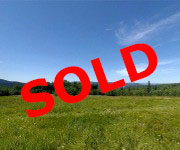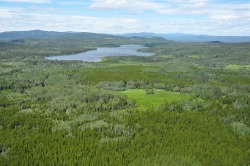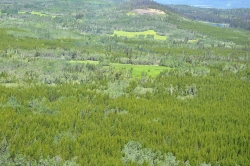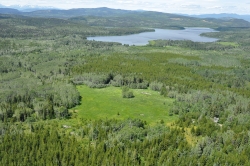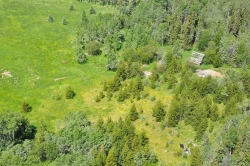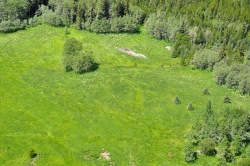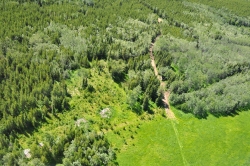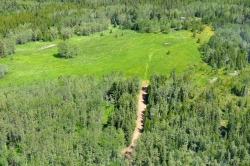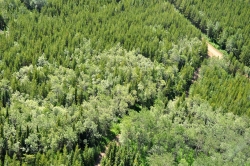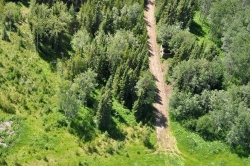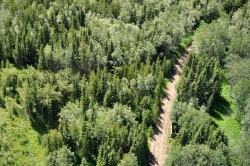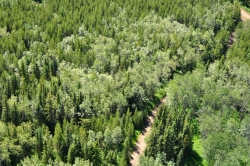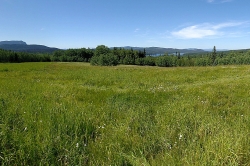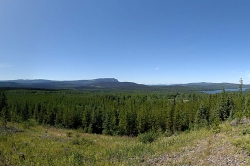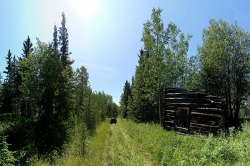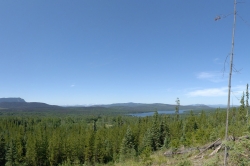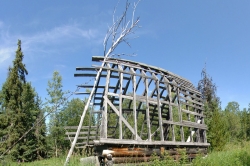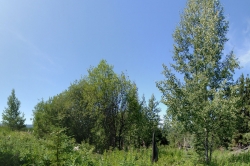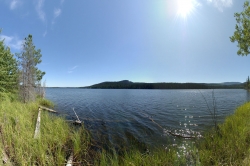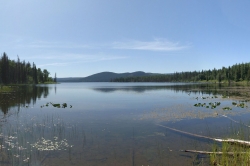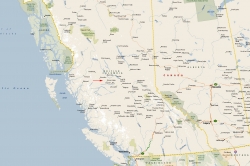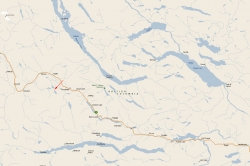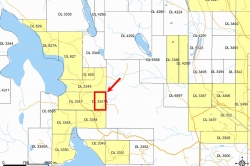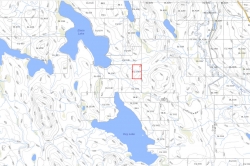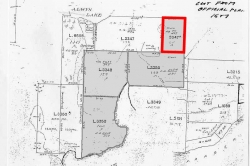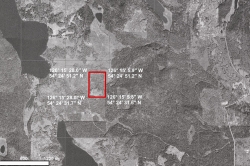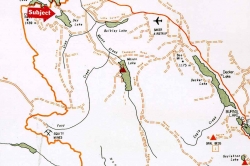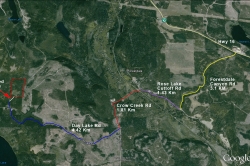Day Lake Uplands
| Listing Number: | OM34B |
|---|---|
| Size: | 60 Acres |
| Map Reference: | 93L |
| Price: | SOLD |
| Legal: | DL 3347A, Coast Range 5, LD 14 |
| Description: | This beautiful property is located close to the north shore of Day Lake, one of the best kept secrets for its fishing. While the terrain is fairly hilly, there are large benches, perfect for building sites. Remains of an old homestead & barn are waiting to be rediscovered on the east boundary, located on a level bench with a large grassy field. Enjoy the panoramic views from this property overlooking the valley and two lakes. |
| Location: | Day Lake is located 40km (25 miles) northwest of the town of Burns Lake and 100km (62 miles) southeast of Smithers in central British Columbia. Burns Lake is 226 km (140 miles) west of Prince George and Prince George is 786 km (488 miles) northeast of Vancouver. |
| Access: | From Burns Lake go west towards Houston and Smithers. At 34 kilometres (21 miles) just past Duncan Lake gas stop turn left (south) onto Forestdale Canyon Road (a good all weather gravel road). At 37 kilometres (23 miles) you come to a junction, turn right. At 39 kilometres (24 miles) turn left and follow the main road over the railroad tracks and Bulkley River. Continue for a few km until you see a sign “Day Lake Road”. Turn right and go for 3 kilometres onto the property. The nearest commercial airport is at Smithers, located just over an hour away. Regular air service is provided by Air Canada’s Jazz Airlines , Central Mountain Air , and Northern Thunderbird to Vancouver and other points in British Columbia. The Smithers airport expanded its runway and upgraded its operations through special federal and provincial funding. Prince George Airport, located 3 1/2 hours away, is the regional airport for Northern B.C., and is expected to play a key role in the economic development of the area. The airport has undergone a major expansion, renovating its runways and international cargo plane fuelling capacity. The airport can accept 747 airplane landings, and has an International Customs and Canada Border Service area for international charter flights. |
| Recreation: | Day Lake is an excellent lake for fishing, and on a calm evening you can see the rainbow trout jumping for flies on the water. In the winter, this area is popular for snowmobiling and ice fishing. Many moose and deer have been seen both in the field and by the lake in the evening. To the west is the “Steelhead Capital of Canada”, the convergence of the Morice and Bulkey Rivers with over two dozen productive spots in and around Houston for the famous and feisty steelhead. Not only are the rivers perfect for fly fishing, but the lake systems are also known for steelhead, trout and char. The entire area known as the Lakes District is famous for its excellent fishing and game. There are a number of resorts throughout this area which offer boating, fishing, hiking, horse-back riding, camping, cross country skiing and many other activities. This area is well known for its hunting and wildlife watching opportunities. Black, cinnamon and grizzly bears, deer, moose, wolves, coyotes and eagles can often be observed in the area. Close to this area is North Tweedsmuir Provincial Park, one of the most scenic provincial parks in the province. Tweedsmuir Provincial Park appeals primarily to outdoor recreationists interested in boating, angling, camping, hiking or hunting in one of North America’s most magnificent wilderness areas. Outdoor recreation opportunities are almost unlimited. Parts of the park are open to hunting in the fall. |
| Area Data: | Houston: With a population of 3200 people, the district municipality has been called the ”Steelhead Capital of Canada” as the productive Bulkey and Morice rivers merge here. However, with fishing, boating, hiking, wilderness watching, and other recreational opportunities located within arms reach in Houston, this area is known as an outdoors paradise. Houston’s economy has grown and diversified in recent decades. It has one of the largest wood processing mills in the country and serves as the home community to many of the workers at the Huckleberry copper mine, located 125km south of Houston. Topley: Topley has a general store with gas bar, two restaurants and two service stations. There is a Community Hall and Association and Volunteer Fire Dept. and First Responders. Burns Lake is the nearest community with a population of 3,614 in the village. The first thing that strikes you when you enter this town is the welcoming sign with enormous chainsaw-carved trout and the inscription “Three Thousand Miles of Fishing”. Major industries include forestry and tourism, though many workers commute to jobs in the mining industry. It also serves as the main commercial centre for the surrounding area, offering all retail and financial services, and a newly upgraded hospital (to be completed in 2015). There are many cafes and restaurants, a selection of stores and services, and is location of the head offices of the Regional District of Bulkley-Nechako. In 2014 The Village of Burns Lake completed work on the Lakeside Multiplex and renovations to the Tom Forsyth Memorial Arena. This facility includes a hockey rink, curling rink, rock climbing gym, a squash/racquetball court, a fitness facility, and multi-use rooms. The facility is located on Spirit Square, a large outdoor park with a playground, a beach, a walking path, outdoor fitness equipment, two tennis courts, and a skateboard park. Day Lake is located within the Lakes District which is noted for sunny skies and moderate rainfall of less than 20 inches per year. This area is known for clean air, friendly people, inviting lakes, wandering country roads, abundant wildlife and the spectacular beauty of nearby Tweedsmuir Provincial Park. |
| History: | Day Lake was named for the first settler on the lake, Dan Day, who arrived here sometime between 1912 and 1918 and started a small farm. He always rode a white horse to pick up supplies in Forestdale, which was, as that time, a train station for the Grand Trunk Pacific Railway and small settlement with store, post office, church/school. Most residents worked on the railway and had homesteaded here. Houston: Founded to support the construction of the Grand Pacific Railway in the turn of the century, Houston soon grew to support the nearby ranching, agricultural, and later forestry operations. By the 1920s Houston had become a railhead for people living in the west end of the Lakes District. Settlers came to Houston via the Parrott Lake/Buck Flats trail for supplies and mail. Originally known as “Pleasant Valley”, the town was re-named for the memory of a popular newspaper man and politician, John Houston, in 1910. Rumour has it there’s gold in a mountain east of Houston, the location of which only “China Knows”, which was the name given to the mountain, although most people now spell it China “Nose”. Burns Lake is called the “Heart of the Lakes District” and “Gateway to Tweedsmuir Park”. The village takes its name from Michael Byrnes, an explorer in the area who passed by the lake in 1866. Settlers were initially drawn to the area by the promise of gold in the Babine Lake vicinity. The actual village was formed in 1914 to service the workers creating the Grand Trunk Pacific Railway through the area. The arrival of the railway opened the forest industry, drawing more settlers and creating a stable economy for the area. |
| Vegetation: | The property was logged of merchantable timber in the late eighties.There are several stands of new growth, mostly consisting of pine, spruce and poplar. There is a large field in hay, which could be harvested and sold. |
| Boundaries: | Boundaries survey by J.M. Milligan in September, 1910, 1912 and by V. Schjelderup in September, 1924 |
| Taxes: | $242.42 (2016) |
| Zoning: | RR 1 (Rural Resource)
|
| Sold Date: | 06/15/16 |


